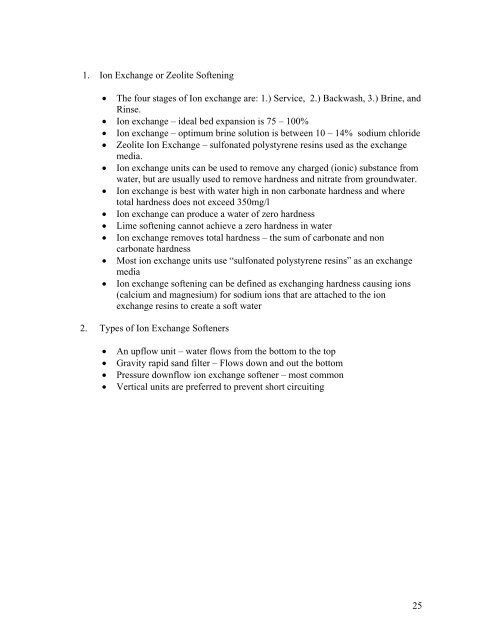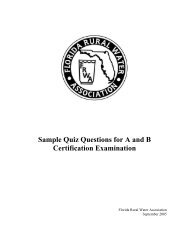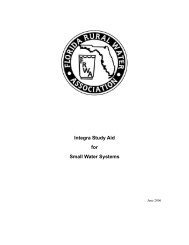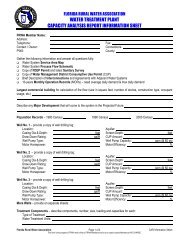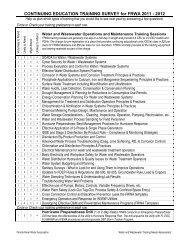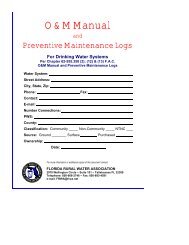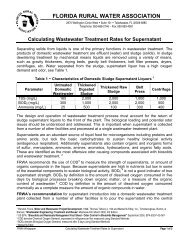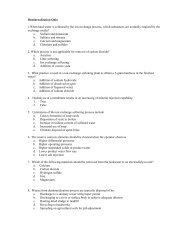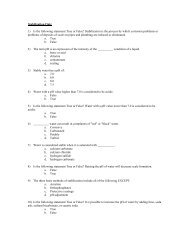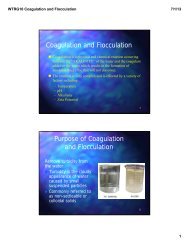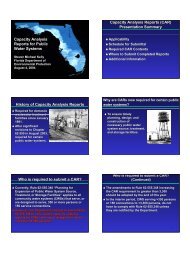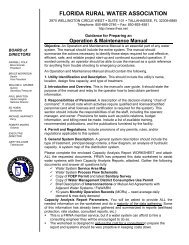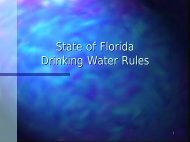The Taylor Tutorial - Florida Rural Water Association
The Taylor Tutorial - Florida Rural Water Association
The Taylor Tutorial - Florida Rural Water Association
You also want an ePaper? Increase the reach of your titles
YUMPU automatically turns print PDFs into web optimized ePapers that Google loves.
1. Ion Exchange or Zeolite Softening• <strong>The</strong> four stages of Ion exchange are: 1.) Service, 2.) Backwash, 3.) Brine, andRinse.• Ion exchange – ideal bed expansion is 75 – 100%• Ion exchange – optimum brine solution is between 10 – 14% sodium chloride• Zeolite Ion Exchange – sulfonated polystyrene resins used as the exchangemedia.• Ion exchange units can be used to remove any charged (ionic) substance fromwater, but are usually used to remove hardness and nitrate from groundwater.• Ion exchange is best with water high in non carbonate hardness and wheretotal hardness does not exceed 350mg/l• Ion exchange can produce a water of zero hardness• Lime softening cannot achieve a zero hardness in water• Ion exchange removes total hardness – the sum of carbonate and noncarbonate hardness• Most ion exchange units use “sulfonated polystyrene resins” as an exchangemedia• Ion exchange softening can be defined as exchanging hardness causing ions(calcium and magnesium) for sodium ions that are attached to the ionexchange resins to create a soft water2. Types of Ion Exchange Softeners• An upflow unit – water flows from the bottom to the top• Gravity rapid sand filter – Flows down and out the bottom• Pressure downflow ion exchange softener – most common• Vertical units are preferred to prevent short circuiting25


